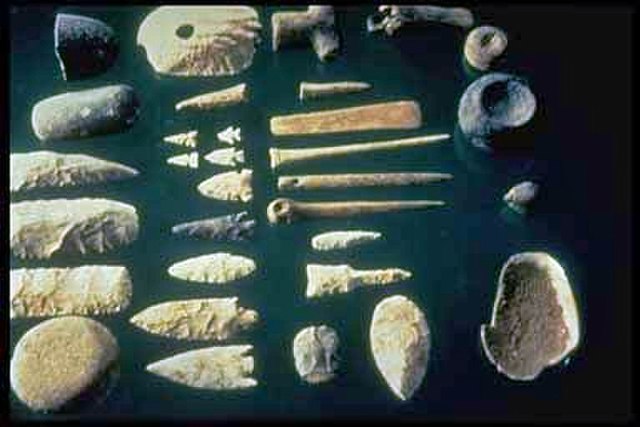The Oldowan was a widespread stone tool archaeological industry (style) in prehistory. These early tools were simple, usually made with one or a few flakes chipped off with another stone. Oldowan tools were used during the Lower Paleolithic period, 2.9 million years ago up until at least 1.7 million years ago (Ma), by ancient Hominins across much of Africa. This technological industry was followed by the more sophisticated Acheulean industry.
Oldowan
Oldowan-tradition stone chopper.
Oldowan choppers dating to 1.7 million years BP, from Melka Kunture, Ethiopia
Chopper from Olduvai Gorge, some 1.8 million years old
A stone tool is, in the most general sense, any tool made either partially or entirely out of stone. Although stone tool-dependent societies and cultures still exist today, most stone tools are associated with prehistoric cultures that have become extinct. Archaeologists often study such prehistoric societies, and refer to the study of stone tools as lithic analysis. Ethnoarchaeology has been a valuable research field in order to further the understanding and cultural implications of stone tool use and manufacture.
A selection of prehistoric stone tools
A biface (trihedral) from Amar Merdeg, Zagros foothills, Lower Paleolithic, National Museum of Iran
Clovis points from the Rummells-Maske Cache Site, Iowa
An array of Neolithic artifacts, including bracelets, axe heads, chisels, and polishing tools.








